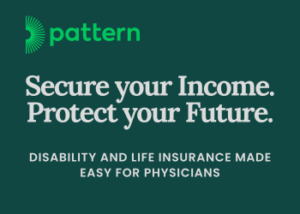All have to wait. As is normal with the busy ER, the ambient noises of machines, alarms ringing, painful moaning, and loud drunken outbursts permeate the department. It’s a controlled chaos.
But, a woman’s scream pierced my soul. Her baby eight-month-old boy laid limp in her arms. He’s already pale, lips blue, his chest not rising as it should with breathing — he is not responding at all. We wasted no time. Nothing brings help faster to a room than a dead child. We rapidly placed a breathing tube, started pushing on his tiny chest with our fingers to keep his heart beating, drilled an IV into his bones, and pushed in all the medications we could. Ten minutes passed. Nothing. Twenty minutes passed. Still nothing. For any other patient, we may check for heart movement and if it’s not moving, pronounce the time of death. Not for children. Never for children. We spent 45 minutes with this baby. Helpless, the time had finally come. We were all in agreement. Time of death: 0205.
The heartbreak is not over though. Next is the mother. What can you say? Not much. I could only sit and try to absorb her grief, her disbelief — her guilt. Fifteen minutes of tears.
What’s next? We move on. It’s a busy night … the damage had already torn into me, but I had many more hours to work; patients are waiting. The next patient had been waiting for two hours. I took a pause, rubbing sanitizer between my cold hands a few seconds longer than usual to compose myself. What happened next etched into my mind as much as the tragedy that occurred minutes ago.
The patient berated me. Yelled at me. “I have been waiting here for hours to see the doctor! What kind of place is this!? You’re supposed to take care of me, not leave me here waiting! I knew I should I have gone somewhere else!”
Anger, fury, outrage. Never have I felt this way. I was dumbfounded.
“I’m sorry for the wait. It’s been busy,” was all I could muster.
Perhaps, if this person knew what had just transpired, there could be some understanding — if the doctor hasn’t talked to you yet, there’s someone sicker needing attention.
But we can’t say it. I can’t say a baby has just died. I can’t tell you that a seven-year-old girl’s body, was ripped by a stray bullet. I can’t mention that we just consoled a weeping family. I can’t.
Our fast-paced culture demands convenience — click a button to order clothes, instant posts on Twitter, get a hamburger through a car window. What we have lost, however, is a little understanding of the human condition — compassion for others. Sometimes we are so self-absorbed, we cannot see past our own hospital gurney. Nowhere is this more apparent than the ER.
Triage must happen. With limited, exhaustible resources, we must do what emergency departments are built for: care for the sickest first. There is a saying in medicine: “Vitals signs are vital.” Abnormal blood pressure, heart rate, rate of breathing, and temperature are good markers of impending doom. This is where we start.
For example, two patients need evaluation.
One is a 30-year-old man with stomach pain with normal vitals — waiting two hours.
The second is a 60-year-old woman with chest pain, fast heart rate, low blood pressure — waiting ten minutes.
Who is first? The choice is obvious. Without emergent therapy, patient #2 will die quickly. Patients #1 may have to wait longer, but patient #2 doesn’t have that luxury. ER doctors will make this decision every time without hesitation.
We are responsible for the entire ER, its people, and its finite resources. It doesn’t matter who you are, the ER is the great equalizer.
For our patients, we recognize that this is one of the worst days of their life. We try to treat it that way. Unfortunately, in the ER, someone else is always sicker than you.
Admittedly, there are more factors beyond physician control. The flow of the ER is much like that of a five-lane freeway. When everyone goes the same speed, traffic flows well. When rush hour hits, more cars merge from the on-ramps and traffic slows. The ER also slows purely by sheer volume. If a semi-truck crashes, cars come to a halt until that truck is taken care of. Likewise, we must tend to that gunshot wound to the chest before focusing on the others. The truck must be cleared to allow others to pass. When the destination is out of parking spots, people are left idling on the freeway. When the hospital is full, the ER gets crowded. The patients that need to stay in the hospital? We keep them in the ER, there’s nowhere else.
No one likes excuses. If it was humanly possible, we’d evaluate everyone instantaneously. Waiting kills. We know this. That’s why we are continually developing ways to improve wait times. We’ve placed physicians in the waiting room, obtained blood work and X-rays right away, streamlined workflow with other specialties and created separate areas to see less critical complaints.
Yet, it’s not enough. People will wait. People have emergencies. Hospitals fill up. It’s sometimes difficult to wear another patient’s gown and step into their slippers, especially when we are hurting ourselves. But that’s what makes us human — why we value society. When we see a fiery crash on the freeway, we hope that no one is hurt and that there are survivors. We understand why we must stop our cars. Our basic instinct is to wish the best for people.
The ER is an overwhelming place — especially for patients. Many factors contribute to the wait time — many behind the ER doors, beyond our control and past our patients’ sight. We may be in pain and we may be in need, but our compassion for others and our humanity can make it bearable.
Edward Lew is an emergency physician and can be reached on Twitter @elewMD.
Image credit: Shutterstock.com
























![Rethinking patient payments: Why billing is the new frontline of patient care [PODCAST]](https://kevinmd.com/wp-content/uploads/Design-3-190x100.jpg)





![Alzheimer’s and the family: Opening the conversation with children [PODCAST]](https://kevinmd.com/wp-content/uploads/Design-4-190x100.jpg)


